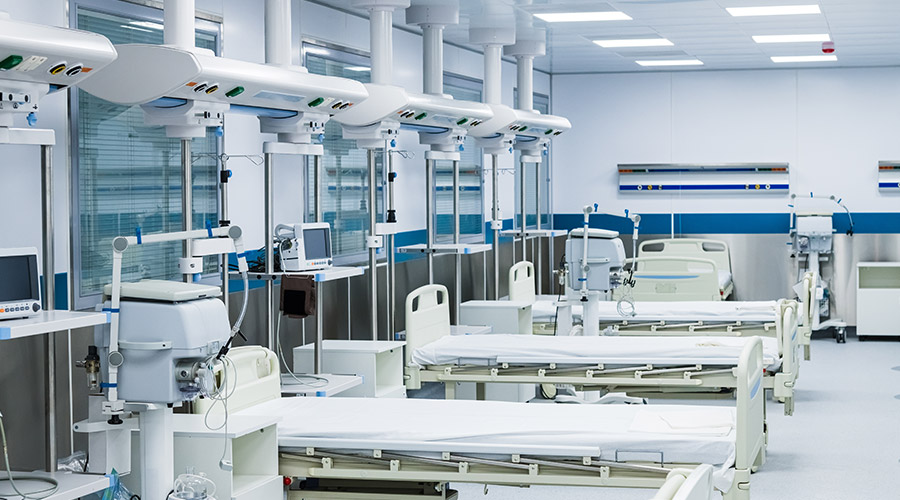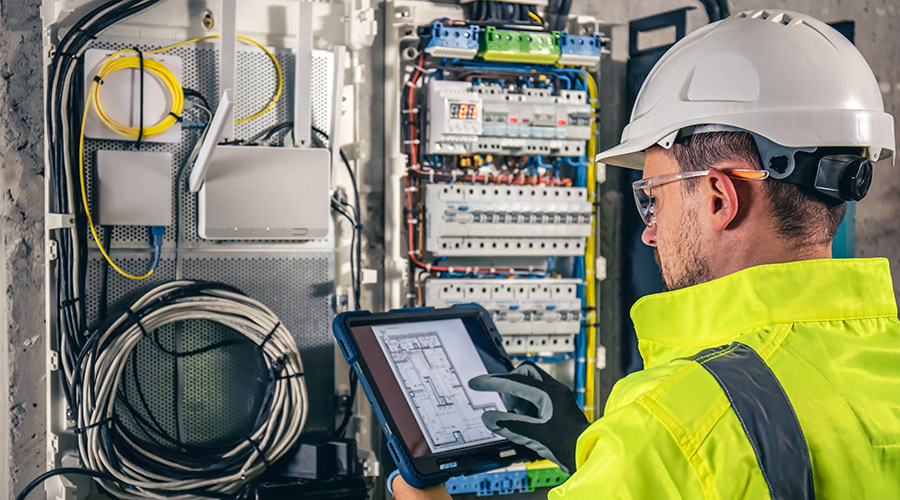It’s a bittersweet feeling to do the final walkthrough of a hospital at the end of a construction project. There’s a realization that our journey is coming to an end, but an overwhelming joy in knowing we’ve built a place that will save lives. It’s this joy that drives our passion and why we’ve been building hospitals for over a century. We take pride in our lessons learned but are constantly working to improve the way we design and build healthcare facilities. In order to deliver increasingly complex healthcare projects, we know we have to combine our years of foundational practices with an open mind to see where we can improve behaviorally, physically and virtually.
Traditionally designers created the plans and handed them off to contractors to build; however, the growing popularity of fast-track integrated delivery methods has blurred the lines of these professional relationships and increased the complexity and speed of the design and construction process. For this reason, we’ve been exploring the use of virtual reality. The immersive environment created by virtual reality provides clarity to multiple hospital end users, enabling them to provide faster and more reliable feedback on the design of their spaces. This time savings increases the quality of the design, correlating into efficient construction and can drastically reduce the lifecycle cost of a building. We’re increasingly finding opportunities to increase ROI for owners through applications of this technology, especially for repetitive and high-profiles spaces.
Benefits of VR for Repetitive and High Profile Healthcare Spaces. In a healthcare facility, there are a number of repetitive spaces (i.e. patient rooms, exam rooms). When you have 200+ identical rooms, the smallest overlooked detail during installation can have costly impact to the schedule, morale of the team, the project budget and most importantly, our client’s trust. This is a risk that’s not worth taking, so we’ve integrated virtual reality into our Quality Program to ensure owner expectations are met and we build things right the first time. In addition, the enhanced visualization provides an ability to better understand and analyze productivity and waste. Typically, repetitive spaces are a hospital’s main source of revenue, so eliminating one extra step that a doctor or nurse has to take generates savings for the hospital and a better experience for the patients. This can be as simple as moving a trashcan or glove dispenser to changing the headwall location, all in the name of improving efficiency for the end users of the space.
The other area where we’re seeing significant value is the high-profile spaces. These spaces can be lobbies, conference rooms, offices or other spaces where clients are investing in high-end finishes. A material that is selected based off a 12x12 sample or color palette will look different when applied to an entire room. With our in-house Virtual Design & Construction professionals, we are able to map those exact materials into virtual reality, giving clients greater confidence in their investment. Once these high-end spaces are finalized in the virtual world, clients have also been able to leverage them for marketing, recruiting and fundraising.
Enhancing the Patient Experience with VR. Virtual reality during design and construction deliver tangible benefits to hospitals. In addition, we’ve recently further expanded our utilization of this technology to work alongside psychologists to explore and better understand other uses of virtual reality that could offer intangible benefits to patients and their families. A number of studies show a positive correlation between a patient’s emotional state and their body’s ability to heal. For example, research shows that anxiety and stress can negatively impact the immune system and surgical procedure outcomes. We also know that when patients can’t relate to sights and sounds around them, they’re prone to increased levels of anxiety and/or stress. The ongoing need for acute care upgrades and the growing demand for ambulatory care mean builders are often finding themselves working directly inside existing facilities or right outside patient’s windows. In these situations, an experienced construction company’s number one goal is to minimize disruption, but hiding cranes and excavators presents its challenges.
Knowing these factors, we asked, “How do we create a relationship between our construction activities and the patients and their families, not only to lower anxiety and stress, but to increase motivation, understanding and hope?” Currently we’re working alongside healthcare professionals to study this question using 360 videos in combination with virtual reality interfaces (HTC Vive, Oculus Rift, Samsung Gear VR). This technology allows us to take patients on virtual tours of our jobsites, so they can relate to and understand the activities happening around them. Our hope is that this will positively affect the well-being of the patient’s stay, directly and indirectly enhancing the healing process.
Virtual reality is changing the way healthcare construction and renovation projects are being delivered today. From streamlining design decisions early on in the process, to improving productivity and quality during construction, to enhancing the patient and hospital staff experience throughout a project and after completion, the benefits are broad and exciting. It is rewarding to know that as builder we no longer have to wait for a project to end in order to experience the joy of saving lives.
Dave McCool serves as the Director of Virtual Design and Construction for McCarthy Building Companies, Inc.

 How Architects Shape the Future of Healthcare Facilities
How Architects Shape the Future of Healthcare Facilities UNC Health, Duke Health Form Partnership for Stand-alone Children's Hospital
UNC Health, Duke Health Form Partnership for Stand-alone Children's Hospital Sarasota Memorial Hospital Plans to Build New Facility in North Port
Sarasota Memorial Hospital Plans to Build New Facility in North Port CMMS, Data and the Path to Compliance
CMMS, Data and the Path to Compliance Healthcare is a Major Ransomware Target
Healthcare is a Major Ransomware Target